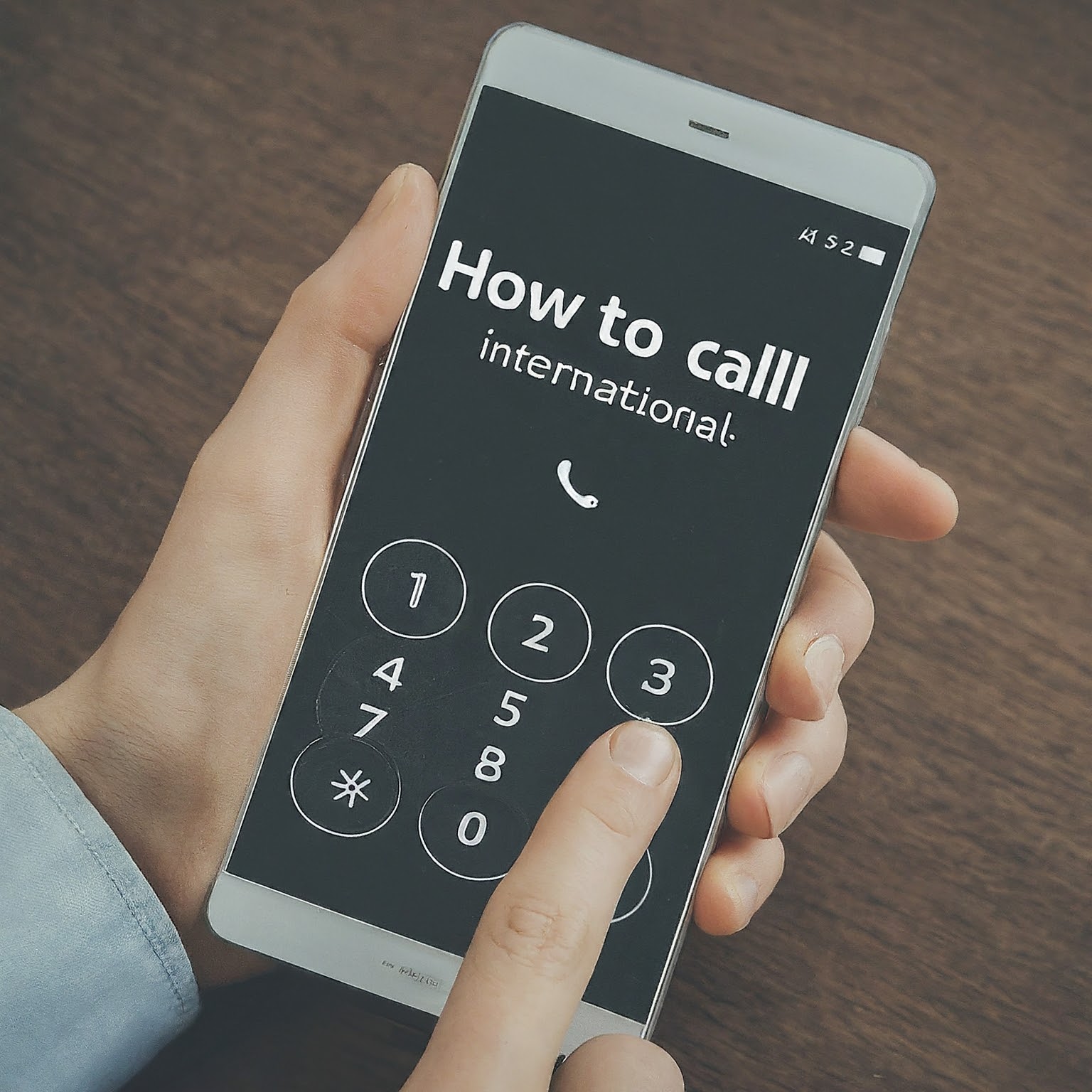Understanding the Basics of International Calling : How to call internationally might seem daunting at first, but with the right information, it’s a straightforward process. Let’s break down the essential components of an international call.

The Building Blocks of an International Call
- Exit Code: This is the number you dial to access the international network from your country. It’s often “00” or “011,” but it can vary.
- Country Code: A unique number assigned to each country. For instance, the US country code is 1, and the UK’s is 44.
- Area or City Code: Some countries require an area or city code before the local phone number.
- Local Phone Number: The actual number you’re trying to reach.
How to Make an International Call
The general format for making an international call is:
Exit Code + Country Code + Area Code + Local Phone Number
For example, to call a number in London from the US, you might dial: 011 + 44 + 20 + XXXXXXXX (where XXXXXXXX is the London phone number).
Using Your Mobile Phone
Most modern smartphones simplify the process. Here’s how:
- Dial the Plus Sign: Instead of the exit code, simply dial the plus sign (+). Your phone will automatically determine the correct exit code based on your location.
- Enter the Country Code and Phone Number: Follow the plus sign with the country code and the phone number.
Using a Landline
If you’re using a landline, you’ll need to dial the exit code before the country code. Consult your phone service provider for the correct exit code.
Tips for International Calling
- Check Your Calling Plan: Understand your phone plan’s international calling rates to avoid unexpected charges.
- Use VoIP Services: Consider using internet-based phone services (VoIP) like Skype or WhatsApp for potentially cheaper rates.
- Utilize Calling Cards: Prepaid calling cards can offer affordable rates, especially for longer calls.
- Consider Time Zones: Be mindful of time differences to avoid inconvenient call times.
- Test Your Connection: If you’re using a VoIP service or calling card, test the connection before making an important call.
International Calling Challenges and Solutions
While making international calls is generally straightforward, you might encounter some challenges.
Problem: Incorrect Dialing Format
- Solution: Double-check the dialing format, including the exit code, country code, and area code.
- Use Online Tools: Many websites offer international dialing guides to help you verify the correct format.
Problem: Poor Call Quality
- Solution: Ensure you have a strong internet connection if using VoIP.
- Try Different Times: Call quality can vary based on time of day.
- Consider Using a Landline: In some cases, landlines might offer better call quality than mobile phones.
Problem: High Costs
- Solution: Explore cheaper alternatives like VoIP or calling cards.
- Check for International Calling Plans: Some phone plans offer discounted rates for international calls.
International Calling with Different Phone Services
The process of making international calls can vary slightly depending on your phone service provider.
Landline Providers
- Check for International Calling Plans: Many landline providers offer international calling plans with different rates.
- Consider Calling Cards: Prepaid calling cards can be a cost-effective option.
Mobile Phone Carriers
- Understand Your Roaming Charges: If you’re traveling abroad, be aware of roaming charges.
- Utilize International Calling Plans: Some carriers offer international calling plans or add-ons.
- Consider Using Wi-Fi Calling: If available, Wi-Fi calling can be a cheaper alternative to roaming.
VoIP Services
- Check Calling Rates: VoIP services often have different rates for international calls.
- Ensure Good Internet Connection: A stable internet connection is essential for call quality.
International Calling and Apps
Several apps can facilitate international calling.
- WhatsApp, Facebook Messenger, and Skype: These platforms offer voice and video calling features.
- Dedicated Calling Apps: Some apps specialize in international calling, often with competitive rates.
Conclucion
Mastering how to call internationally is essential in today’s interconnected world. By understanding the basic components of an international call, exploring different calling options, and being aware of potential challenges, you can make clear and affordable calls to anywhere in the world.

لا تعليق